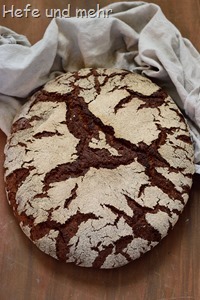 I like to bake “by order” as I can then bake bread I bake rather seldom. Pure Rye bread, for example, as I have a rather sensitive stomach who do not like the higher acidity of rye bread. And while I do not eat rye bread I still like to bake it. Its different consistency makes it a bit challenging and is a nice change in my wheat- and spelt-dough routine.
I like to bake “by order” as I can then bake bread I bake rather seldom. Pure Rye bread, for example, as I have a rather sensitive stomach who do not like the higher acidity of rye bread. And while I do not eat rye bread I still like to bake it. Its different consistency makes it a bit challenging and is a nice change in my wheat- and spelt-dough routine.
For this bread which I bake for a big birthday I choose so called “Lichtkornroggen”. This is a rye variety containing light coloured rye seeds instead of the normal grey green coloured rye. It is a modern back breeding from ancient rye varieties and yields a lighter bread then normal whole rye flour. Its flavour is milder as well and so I build the sourdough in the classical german “three stages”: The so called “Anfrischsauer” (refreshed sourdough) to activate the yeasts is then followed by the low hydrated “Grundsauer” (basic sourdough) to generate a well balanced acidity and the last step called “Vollsauer” (complete sourdough) in which the warm and soft dough is perfect for yeast and homofermenting lactobacteria and in which the sourdough develops a lot of activity. Continue reading

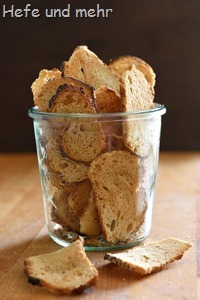
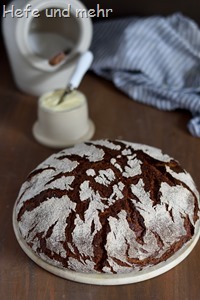 In January a reader asked me about a recipe for dark bread with lots of rye, but without Sourdough. I needed time to think about a recipe, but finally a recipe began to form in my head. As rye needs acid for baking, I choose butter milk as liquid. The complex flavour is created by a rye poolish and a soaker made out of dried whole grain bread crumbs. The bread is in the style of a dark farmers bread with 70% rye. The buttermilk adds a noticeable but mild acidity like you would find in a mild sourdough bread.
In January a reader asked me about a recipe for dark bread with lots of rye, but without Sourdough. I needed time to think about a recipe, but finally a recipe began to form in my head. As rye needs acid for baking, I choose butter milk as liquid. The complex flavour is created by a rye poolish and a soaker made out of dried whole grain bread crumbs. The bread is in the style of a dark farmers bread with 70% rye. The buttermilk adds a noticeable but mild acidity like you would find in a mild sourdough bread.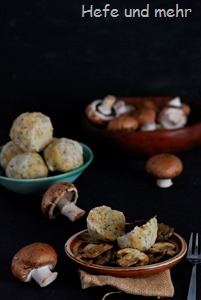 I always try to avoid waste of food. And since I started to bake my own bread I care even more to save bread. But like in every other household, there is bread which get stale and there are left over rolls. But the old bread and rolls can be useful, too! The bread is dried and grinded in a food processor into bread crumbs, which are very useful in baking and cooking. The rolls are sliced very thinly and used for making “Semmelknödel” (Bread Dumplings). And since I started to use homemade bread, the dumplings work very well while in former days, when I used the same recipe with store bought rolls, I always struggled with dumplings falling apart while cooking. But with my own rolls the recipe works like a charm!
I always try to avoid waste of food. And since I started to bake my own bread I care even more to save bread. But like in every other household, there is bread which get stale and there are left over rolls. But the old bread and rolls can be useful, too! The bread is dried and grinded in a food processor into bread crumbs, which are very useful in baking and cooking. The rolls are sliced very thinly and used for making “Semmelknödel” (Bread Dumplings). And since I started to use homemade bread, the dumplings work very well while in former days, when I used the same recipe with store bought rolls, I always struggled with dumplings falling apart while cooking. But with my own rolls the recipe works like a charm!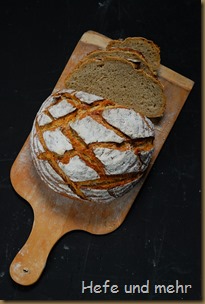
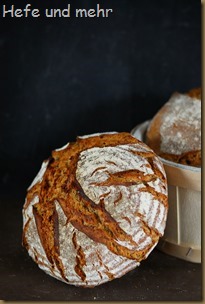
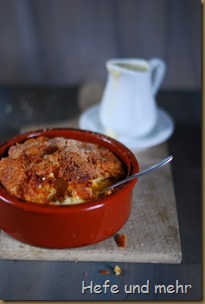 To blog about todays lunch is not really necessary because I posted the recipe for Ofenschlupfer, the swabian kind of bread pudding, already
To blog about todays lunch is not really necessary because I posted the recipe for Ofenschlupfer, the swabian kind of bread pudding, already 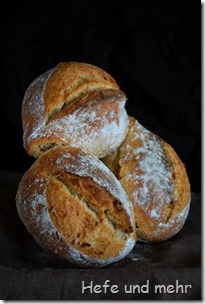
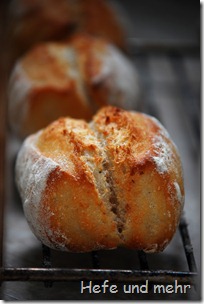 I baked already a lot of french breads:
I baked already a lot of french breads:  Lutz baked a
Lutz baked a